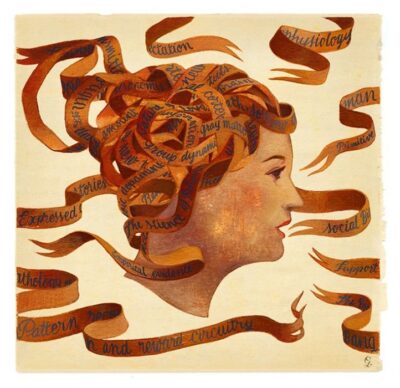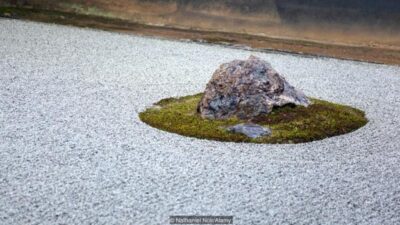Hope you’re kedge and not gut-foundered, but if you are don’t get too macaroni, a simple snack and some Adam’s Ale should do the trick.

When you think of Colonial America, soldiers marching to fife and drum and Benjamin Franklin flying a kite are probably what come to mind. But the Colonial Period—which stretched from roughly 1607 to 1776, starting when America was just a group of colonies on the east side of the continent and ending with the Revolutionary War and the signing of the Declaration of Independence—was a fascinating but complicated time in which settlers from England forged a proud new identity. These new settlers brought the English language with them when they came, and whenever English finds a new home, it often takes on a new life. America was no exception. Here are 15 slang words that were recorded in and around this period of American history.
- Kedge
What It Meant: Doing well
In you lived in a country town in Colonial-era New England and someone asked how you were doing, you might have replied, “I’m pretty kedge.” It’s a bizarre but wonderful term that essentially means in being in good health—but it also kind of sounds like something a teen in an ‘80s movie would say.
- Cat’s-Paw, or to Be Made a Cat’s-Paw Out Of
What It Meant: To be a dupe, to be used as a tool.
This colorful expression came from a fable, The Monkey and the Cat, where a monkey persuades a cat to pull chestnuts out of a fire, promising the cat its share. Spoiler alert: The cat doesn’t get any. So to be used for someone else’s gain is to be made a “cat’s paw out of.”
- Chuffy
What It Meant: Surly or impolite
If someone is short with you, tell them they don’t have to be so chuffy. It’s a strange, old word with obscure origins, and one that sounds a bit softer than “jerk.”
- Scranch
What It Meant: To crack something between your teeth
Though this apparently “vulgar” term sounds like it was named after what it sounds like to crack something with your teeth, it supposedly comes from the Dutch word, schransen.
- Gut-Foundered
What It Meant: Very Hungry
This word, which dates to 1647, is believed to be regional Newfoundland slang. Gut-foundered could easily become a new hyperbole for us pampered moderns to employ, like “starving.”
- Fishy
What It Meant: Drunk
Possibly no one invented more ways to say “drunk” than colonial Americans. Benjamin Franklin alone compiled 200 ways to say it. Fishy was meant to also imply the way the drinker looked: “Bleary eyes and turned-down mouth corners make a drunk resemble a fish,” writes Richard M. Lederer, Jr. at American Heritage.
- Macaroni
What It Meant: Fancy
When Yankee Doodle called that feather hat “macaroni,” he wasn’t being a weirdo. Macaroni was a term used at the time to refer to a particular men’s fashion from England that was intentionally flashy, over-the-top, and androgynous.
- Twistical
What It Meant: Unfair or immoral
This word—which according to 1848’s Dictionary of Americanisms was primarily used in New England—feels like it could just as easily have been invented today. Slip it into conversation in the next time you experience something unjust.
- Savvy, Savey, or Sabby
What It Meant: To know or understand
While we still use this word to mean something like “literate” (computer-savvy), in Colonial times, it was actually used more like the way Jack Sparrow uses it. So you might say, “I don’t want to come to work anymore, savvy that?” According to Merriam-Webster, it’s derived from sabe, which means “he knows” in Portuguese. This became sabi in Creole, and later, “savvy.”
- Adam’s Ale
What It Meant: Water
If you’re feeling thirsty for water, try using this slang term that was popular on both sides of the pond in the Colonial era. To quote a 1792 American poem by Philip Freneau, “In reason’s scale his actions weigh’d / His spirits want no foreign aid / Long life is his, in vigour passes / A spring that never grew stale / Such virtue lies in Adam’s Ale.”
- Shaver
What It Meant: A young or adolescent boy
To call a boy a shaver was to imply that they were young enough that they just started shaving. Which is fitting, if a little condescending—like they’re not embarrassed enough already!
- Jollification
What It Meant: Celebration or merrymaking
It’s hard to even say jollification without sounding like a reenactor at Colonial Williamsburg. And though jollification sounds like it would be a good thing, it seems like there was also such a thing as too much jollification: The August 10, 1772 edition of The Pennsylvania Packet used the word in a morality tale about a man named Hilario: “What jolification [sic] could be complete without Hilario? Cards succeeded cards every morning to invite him to dinner, to routs, to dances; his only excuse was prior engagement, and he had not resolution to withstand the temptations.” By the end of the tale, according to Children In Colonial America, “a life of cards, women, and wanton spending slowly whittled away his wealth … no woman would marry him, and even his good looks had failed him.”
- Simon Pure
What It Meant: The real deal, authentic, untainted
A delightful phrase that rolls off the tongue and could be dropped into many modern sentences. And when someone asks you, “who the heck is Simon?” you tell them that Simon Pure was a Quaker character who has to prove he’s the real Simon Pure in a 1718 play by Susanna Centlivre called A Bold Stroke for a Wife.
- Circumbendibus
What It Meant: Roundabout
Of all the ways to describe something unnecessarily roundabout— like someone telling a rambling story or taking a weird road when driving somewhere—this word, which dates to 1681, might be the most delightful. It also shows how much we fun we had and still have with language, combining prefixes and suffixes to make new words.
Joe Gillard is the author of The Little Book of Lost Words, and the founder of History Hustle.
Original article here



 Don Giovanni – the protagonist of Mozart’s opera Don Giovanni (1787), a legendary seducer who is also sometimes known as Don Juan – is, Kierkegaard suggested, the ultimate archetype of the aesthetic mode because he lives for immediate sexual gratification and sensuality. Don Giovanni is a player. He is handsome, seductive and exciting. Women find him irresistible: he has slept with more than 2,000 women whose names he records in his not-so-little black book. Don Giovanni seeks pleasure above all else, and dances through his hedonistic life.
Don Giovanni – the protagonist of Mozart’s opera Don Giovanni (1787), a legendary seducer who is also sometimes known as Don Juan – is, Kierkegaard suggested, the ultimate archetype of the aesthetic mode because he lives for immediate sexual gratification and sensuality. Don Giovanni is a player. He is handsome, seductive and exciting. Women find him irresistible: he has slept with more than 2,000 women whose names he records in his not-so-little black book. Don Giovanni seeks pleasure above all else, and dances through his hedonistic life. Kierkegaard’s leap was guided by the commandment to ‘love thy neighbour’. In Works of Love(1847), written under Kierkegaard’s real name, he proposes that universal love, or agapē, is the secret to happiness because it overcomes the fleetingness and insecurity of aesthetic and ethical relationships. Love is Ariadne’s thread of life because, as long as you love, as long as you commit yourself to being a loving person, you’ll be safe from being hurt and alone. Kierkegaard thought that this sort of unwavering faith reflects a supremely developed human being.
Kierkegaard’s leap was guided by the commandment to ‘love thy neighbour’. In Works of Love(1847), written under Kierkegaard’s real name, he proposes that universal love, or agapē, is the secret to happiness because it overcomes the fleetingness and insecurity of aesthetic and ethical relationships. Love is Ariadne’s thread of life because, as long as you love, as long as you commit yourself to being a loving person, you’ll be safe from being hurt and alone. Kierkegaard thought that this sort of unwavering faith reflects a supremely developed human being. We are all storytellers; we make sense out of the world by telling stories. And science is a great source of stories. Not so, you might argue. Science is an objective collection and interpretation of data. I completely agree. At the level of the study of purely physical phenomena, science is the only reliable method for establishing the facts of the world.
We are all storytellers; we make sense out of the world by telling stories. And science is a great source of stories. Not so, you might argue. Science is an objective collection and interpretation of data. I completely agree. At the level of the study of purely physical phenomena, science is the only reliable method for establishing the facts of the world. Withdrawing my hands reluctantly from the slowly spinning bowl, I watched its uneven sides slowly come to a stop, wishing I could straighten them out just a little more. I was in the ancient pottery town of Hagi in rural Yamaguchi, Japan, and while I trusted the potter who convinced me to let it be, I can’t say I understood his motives.
Withdrawing my hands reluctantly from the slowly spinning bowl, I watched its uneven sides slowly come to a stop, wishing I could straighten them out just a little more. I was in the ancient pottery town of Hagi in rural Yamaguchi, Japan, and while I trusted the potter who convinced me to let it be, I can’t say I understood his motives. Wabi, which roughly means ‘the elegant beauty of humble simplicity’, and sabi, which means ‘the passing of time and subsequent deterioration’, were combined to form a sense unique to Japan and pivotal to Japanese culture. But just as Buddhist monks believed that words were the enemy of understanding, this description can only scratch the surface of the topic.
Wabi, which roughly means ‘the elegant beauty of humble simplicity’, and sabi, which means ‘the passing of time and subsequent deterioration’, were combined to form a sense unique to Japan and pivotal to Japanese culture. But just as Buddhist monks believed that words were the enemy of understanding, this description can only scratch the surface of the topic. It is the inevitable mortality embound in nature, however, that is key to a true understanding of wabi-sabi. As author Andrew Juniper notes in his book Wabi Sabi: The Japanese Art of Impermanence, “It… uses the uncompromising touch of mortality to focus the mind on the exquisite transient beauty to be found in all things impermanent”. Alone, natural patterns are merely pretty, but in understanding their context as transient items that highlight our own awareness of impermanence and death, they become profound.
It is the inevitable mortality embound in nature, however, that is key to a true understanding of wabi-sabi. As author Andrew Juniper notes in his book Wabi Sabi: The Japanese Art of Impermanence, “It… uses the uncompromising touch of mortality to focus the mind on the exquisite transient beauty to be found in all things impermanent”. Alone, natural patterns are merely pretty, but in understanding their context as transient items that highlight our own awareness of impermanence and death, they become profound. “You have different feelings when you’re young – everything new is good, but you start to see history develop like a story. After you’ve grown up, you see so many stories, from your family to nature: everything growing and dying and you understand the concept more than you did as a child.”
“You have different feelings when you’re young – everything new is good, but you start to see history develop like a story. After you’ve grown up, you see so many stories, from your family to nature: everything growing and dying and you understand the concept more than you did as a child.”